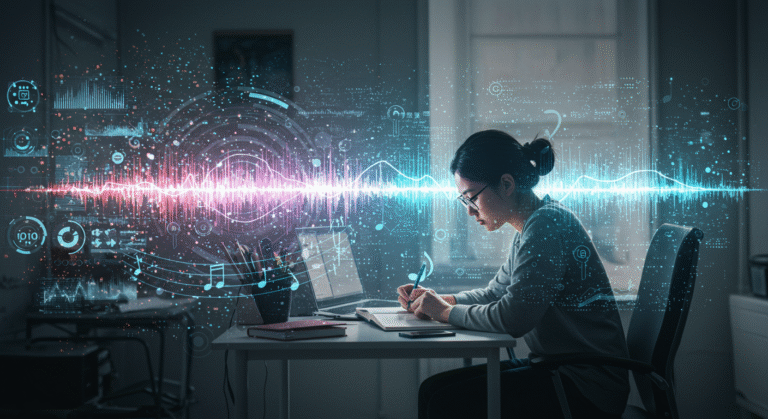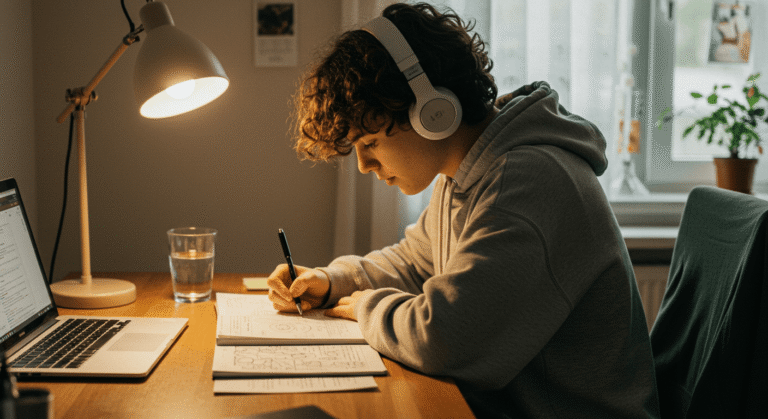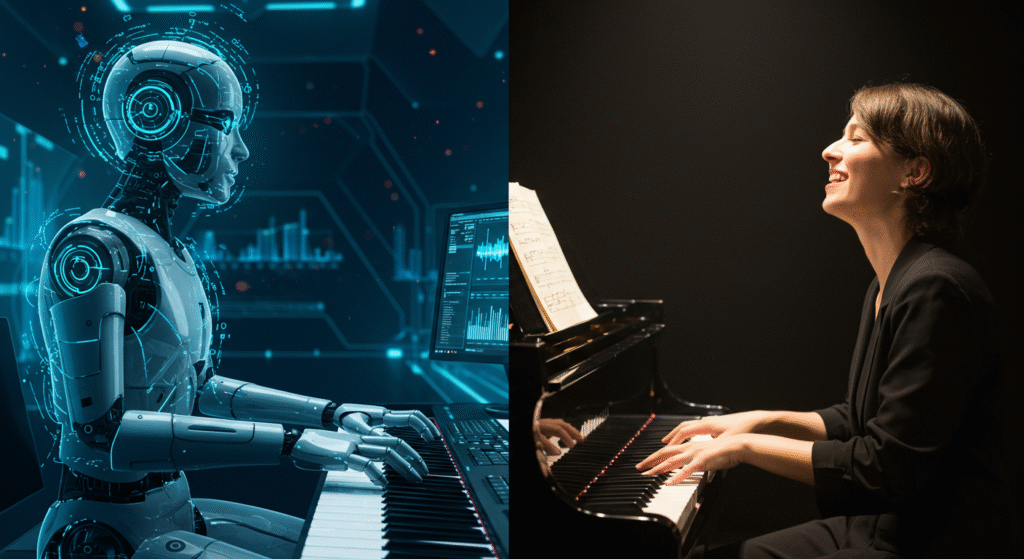
We live in an era where even your toaster probably has Wi-Fi. Algorithms decide what news you see, what ads follow you around the internet, and even what music you hear while you’re trying to cram for exams or finish that never-ending essay. Thanks to the rise of the AI music generator, you can summon an endless stream of soundscapes in seconds – no musicians, no studios, just code.
But here’s the question: should we really let machines take over our playlists? When it comes to music for studying, focusing, and relaxing, there’s something that algorithms simply can’t replicate: the human spark behind original music.
The Irreplaceable Soul of Human-Made Music
Here’s the deal: human-made music isn’t just about hitting the right notes. It’s about expression. When a pianist leans into a chord, or when a guitarist bends a string just slightly too far, you hear personality. Imperfections are not mistakes – they’re reminders that someone real is on the other end.
Now, ask an AI to do the same. What you’ll get is … fine. Polished. Perfectly in tune. And utterly soulless. You can’t program goosebumps.
Is AI Music Good for Studying?
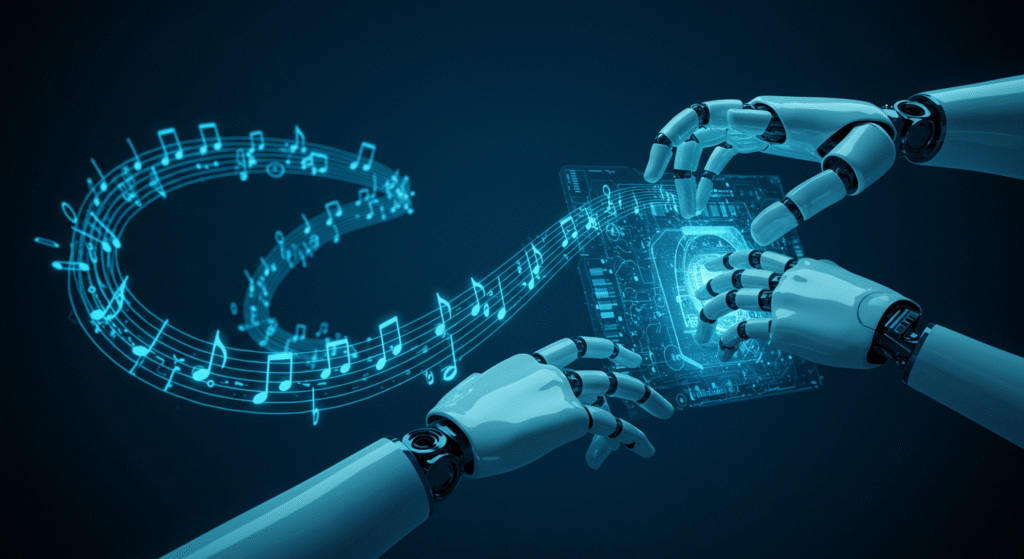
To be fair, many people turn to AI soundscapes because they seem practical. They’re repetitive, predictable, and won’t suddenly throw in a saxophone solo when you’re deep in calculus. On paper, that’s ideal for studying.
But here’s the catch: sameness quickly becomes sameness overload. Ever listened to white noise for too long? At first it’s calming, but after a while your brain either tunes it out completely or feels oddly restless. That’s because your mind craves variation – not distraction, but gentle shifts that keep you alert without breaking your flow.
That’s where human-created concentration music for study comes in. Real musicians naturally weave in micro-changes – slight variations in rhythm, tiny shifts in dynamics – that AI struggles to emulate. The result? You stay engaged without even realizing why.
Read More: Is AI Music Good for Studying? Pros and Cons
The Value of Original Music in a Digital World
Think about it: when you listen to an artist’s work, you’re not just consuming noise. You’re engaging with a piece of their creativity. The value of original music lies in its authenticity. It’s not background filler created to maximize clicks; it’s the result of someone choosing a chord progression because it felt right at that moment.
That intentionality matters. Music has always been about connection. From lullabies to protest songs, from symphonies to three-chord rock anthems, it’s how humans have always shared emotion, memory, and meaning. Strip that away, and what’s left is little more than elevator music on steroids.
Read More: The Psychology of Music and Why Authenticity Matters.
Why Algorithms Alone Can’t Create Flow
Algorithms are clever. They can replicate patterns, mimic genres, and even “learn” what listeners like. But they can’t feel. And creativity without feeling is like a recipe without flavor – you can follow all the steps, but the magic isn’t there.
If you’ve ever entered a flow state – that magical zone where time disappears and work feels effortless – you’ll know it’s fragile. The wrong song can break it in an instant. That’s why human-made music works better: it understands tension, release, and timing in a way no code can fully mimic.
Check Out This Post: Best Music for Creativity and Flow State

Real Music vs. AI Music Generator: It’s Not a Fair Fight
Let’s be honest. AI-generated tracks are convenient, but convenience isn’t everything. Fast food is convenient too, but no one pretends it’s better than a home-cooked meal. AI music is the fast food of sound – quick, filling, but lacking depth. Original music, by contrast, is the slow-cooked stew: nourishing, complex, and made with care.
When you press play on a real performance, you’re tapping into something crafted for the joy of creating. That’s an entirely different experience than pressing a button and receiving a loop.
Want to know more? AI Music Generator vs. Human Creativity: What’s the Difference?
Building Your Own Soundtrack for Focus
So, what’s the practical takeaway? If you’re trying to concentrate, don’t settle for the musical equivalent of instant noodles. Curate your own playlist of concentration music for study that’s been made by real musicians. Look for piano sessions, acoustic guitar, or instrumental tracks where you can feel a person’s touch.
Not only will your brain thank you, but your study sessions will feel less like staring at walls and more like engaging with something alive.
Read This: Best Concentration Playlists for Study and Work
Final Notes: Why Human Music Matters More Than Ever
We’re not anti-technology. AI is fun, and it can even help us discover new ways of creating. But when it comes to the music that gets you through exams, long workdays, or late-night creative sessions, you deserve better than automated loops.
Music is one of the last bastions of true human expression. Don’t outsource that to a server farm. Support human-made music, embrace its imperfections, and let yourself connect with something real.
Real Music @ The Flowing Piano
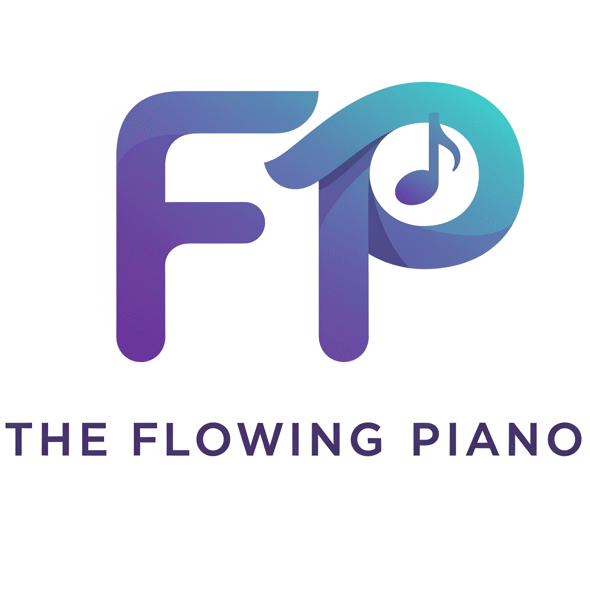
Want to experience real piano music made for focus, creativity, and relaxation? Visit my channel The Flowing Piano – no AI, no algorithms, just honest performances. Your concentration will thank you. I recommend my playlist for deep focus and concentration: Deep Focus @ The Flowing Piano.
Until next time, Andy @ The Flowing piano 🙂


